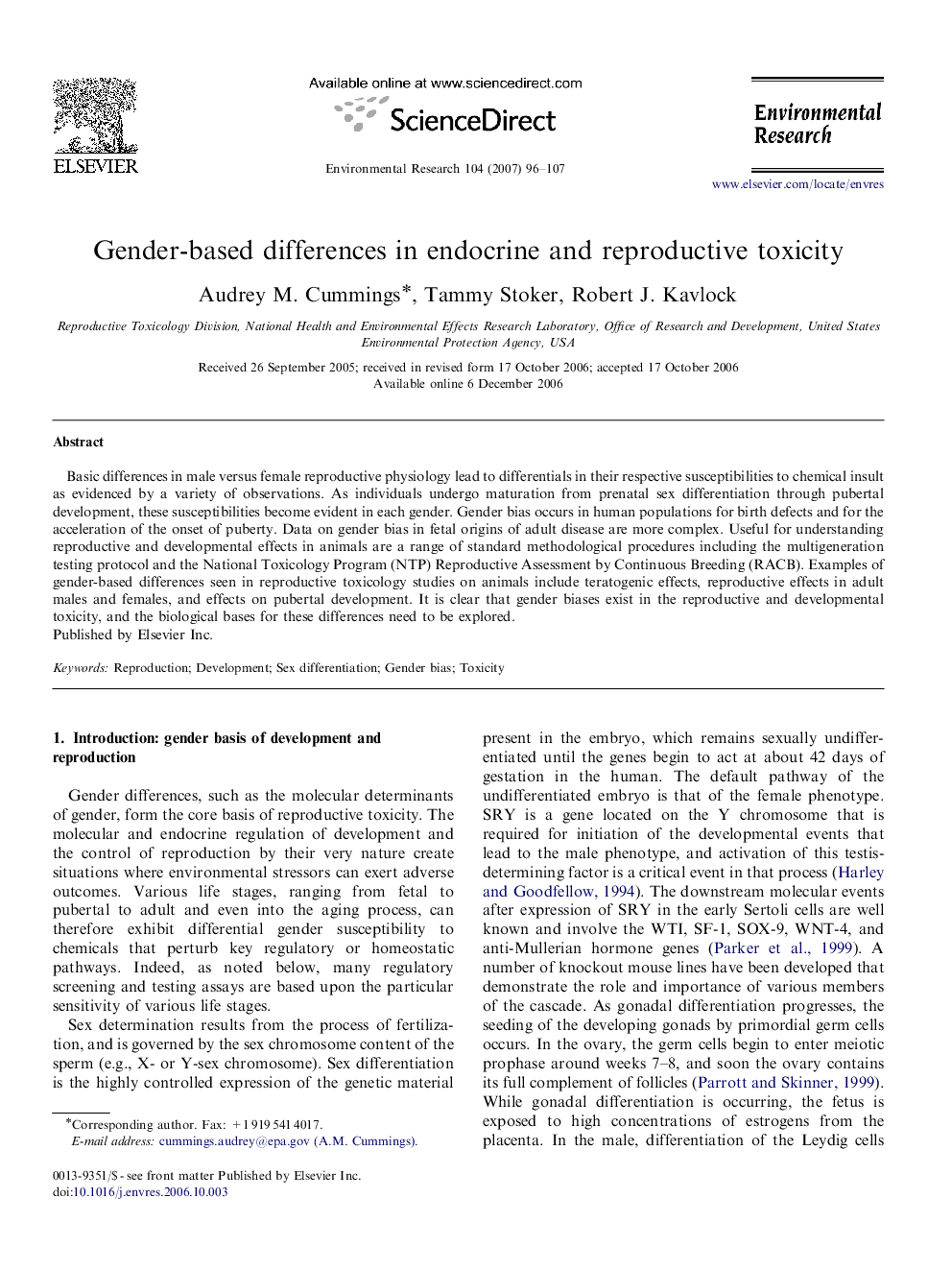| Article ID | Journal | Published Year | Pages | File Type |
|---|---|---|---|---|
| 4470956 | Environmental Research | 2007 | 12 Pages |
Basic differences in male versus female reproductive physiology lead to differentials in their respective susceptibilities to chemical insult as evidenced by a variety of observations. As individuals undergo maturation from prenatal sex differentiation through pubertal development, these susceptibilities become evident in each gender. Gender bias occurs in human populations for birth defects and for the acceleration of the onset of puberty. Data on gender bias in fetal origins of adult disease are more complex. Useful for understanding reproductive and developmental effects in animals are a range of standard methodological procedures including the multigeneration testing protocol and the National Toxicology Program (NTP) Reproductive Assessment by Continuous Breeding (RACB). Examples of gender-based differences seen in reproductive toxicology studies on animals include teratogenic effects, reproductive effects in adult males and females, and effects on pubertal development. It is clear that gender biases exist in the reproductive and developmental toxicity, and the biological bases for these differences need to be explored.
